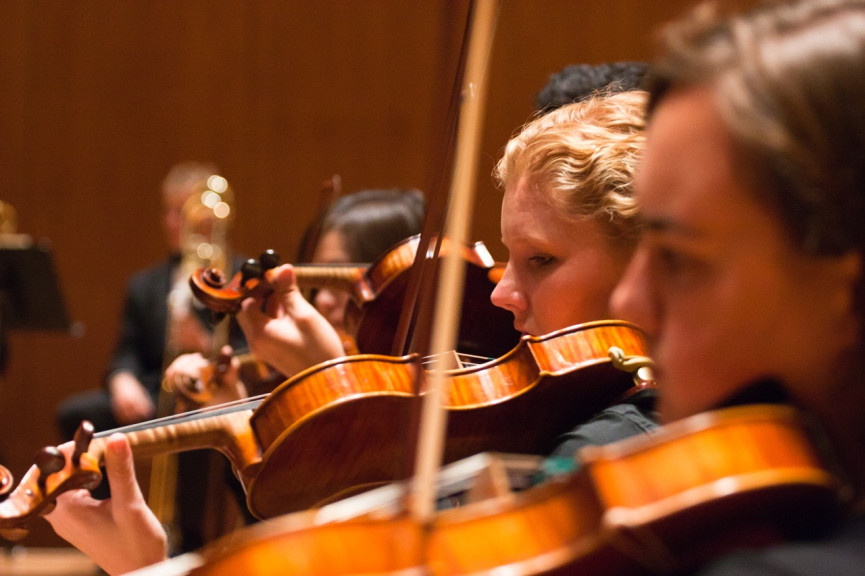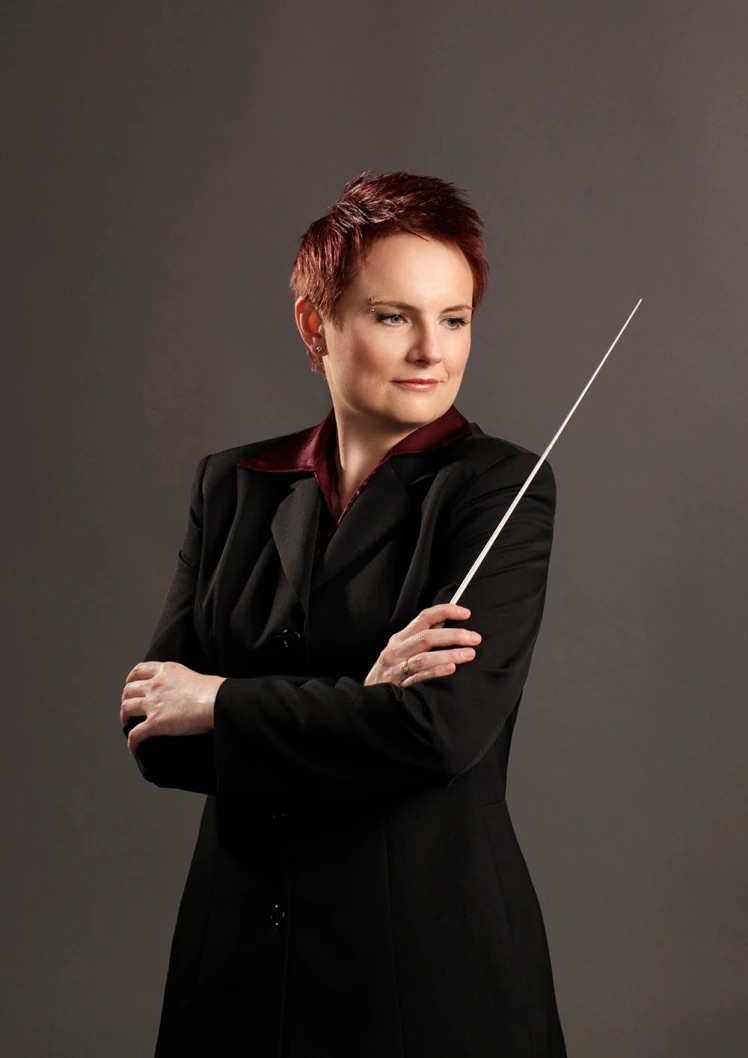Announcing the 1874 Project

This year marks the 150th anniversary of the University of Illinois Symphony Orchestra’s (UISO) first performance. In 1874, a student-led ensemble of three violins, one bass, three horns, and two pianos performed selections from Ferdinand Hérold’s opera Zampa as part of the University of Illinois’ seventh-anniversary celebrations. While this small group does not resemble the modern, full orchestra that UISO is today (there wasn’t even a School of Music yet), it did kick off 150 years of growth and development. Today, the university boasts three full-time orchestras, involving over 300 students annually. To commemorate this milestone, Director of Orchestras Dr. Carolyn Watson had an idea: to launch a commissioning initiative to expand and diversify the orchestral canon. Through the 1874 Project, the University of Illinois will commission six female composers to write works that the UISO will premiere and record over the next few years. These works will be written at a level where they can be played by most youth, high school, and collegiate orchestras in the United States.
“As a conductor who enjoys a professional career alongside my work in academia, I am abreast of programming in both these areas,” Watson said. “Very sadly, it seems as though schools, colleges, and universities often lag well behind the profession in their approach and programming, so that is indeed a dire situation and one I am passionate about working to alleviate.”

Director of Orchestras Dr. Carolyn Watson
The choice of female composers specifically is in an effort to address the imbalance in the programming of female composers’ works. “Women composers (and indeed conductors) are woefully underrepresented when we look at programming by orchestras worldwide,” Watson explained. “In commissioning six women composers, I want of course to highlight and promote women’s musical voices. In asking that these pieces be approachable for young players, I did so because if we are to change the world—or in this case, the orchestral canon—we need to start where everything starts, which is with education.”
Watson cited another recent initiative to rectify this imbalance—the New York Philharmonic’s Project 19. Also launched to commemorate an important anniversary, this project marked the centenary of the passing of the 19th Amendment, which gave women the right to vote in the United States. Begun in 2020, the multiyear project will commission new works from 19 female composers, representing the largest women-only commissioning initiative in history.
“This is, of course, terrific,” Watson said of Project 19. “However, the vast majority of U.S. orchestras are not those able to perform with the same level of virtuosity as demonstrated by the New York Philharmonic! In specifying the playability of these works by young musicians, I am hoping that they will be performed widely and particularly by high school and honor orchestras, All State ensembles, and youth, community, and collegiate orchestras.”
To ensure the accessibility of the works, Watson also stipulated that they follow fairly standard instrumentation and require no auxiliary instruments. The pieces will average 7–10 minutes in length, so they are substantive enough to avoid being relegated to the sphere of token concert openers. Watson called this an unfortunate trend in which a short piece by a composer from an underrepresented demographic is programmed at the top of a concert before the “real” repertoire begins.
Finally, the last element of the project’s brief is to use “1874” as a creative springboard. Two of the commissioned pieces are already complete. For her offering, Chicago-based composer Stacy Garrop was inspired by an iconic American invention—the blue jean. On May 20, 1873, dry goods supplier Levi Strauss and tailor Jacob Davis obtained a U.S. patent for using metal rivets to strengthen men’s work pants. They began producing the first riveted “work overalls,” using the traditional fabric for workwear, denim. This innovation proved so lucrative that in 1874, Levi Strauss & Company’s profits had tripled from the previous year. Thus, the blue jean as we know it today was born.
Garrop’s piece, American Denim, pays homage to this turning point in American fashion. “In American Denim, I explore two time periods and uses for blue jeans,” Garrop explained over email. “Down in the Mines (movement 1) pays tribute to the use of the early riveted denim as a clothing staple for workmen in the late 1800s. In Rebellious Youth (movement 2), I delve into the 1950s use of denim as a symbol of the rebellion of the younger generation against all types of authority.”
Stacy Garrop’s name will likely be familiar to central Illinois audiences, as she was the Champaign-Urbana Symphony Orchestra's composer-in-residence from 2017 to 2019. Though Watson had not worked with Garrop before, she was very interested in her work, particularly given the local connection. “One of our orchestras performed an excerpt from her Mythology Symphony last year, so I can’t wait to work on American Denim,” Watson remarked.
Comet Coggia, by German composer Ingrid Stölzel, looks to another momentous event of the 1870s—the Great Comet of 1874. The astronomical phenomenon, first spotted by French astronomer Jérôme Eugène Coggia on April 17, 1874, could be observed in both hemispheres by the summer of 1874. Sightings of Coggia’s comet caused quite a stir and even spurred a satirical short story by Mark Twain (“A Curious Pleasure Excursion”).
“There are many historical accounts of the comet, and observers noted maximum naked-eye tail lengths reaching 70 degrees as the comet passed closest to the Earth on July 23, 1874,” Stölzel writes in a preliminary program note. “In Illinois, an amateur astronomer put a powerful telescope on the balcony of the Interstate Industrial Exposition Building, a large glass structure along the shore of Lake Michigan, and offered showings of Comet Coggia up close.”
Watson got to know Stölzel when they were both at the University of Kansas—Watson as director of orchestral activities and Stölzel as a composition professor. “She invited me to the premiere of her piece City Beautiful, which had been commissioned by the Youth Symphony of Kansas City, and I fell in love with it immediately,” Watson explained. “It’s a phenomenal work, and I have performed it with a number of honors and All State orchestras, orchestras at UIUC and KU, and professional ensembles. We have joked that I’ve done it so many times, she simply needs to write me another piece!”
The third composer to participate in the project will be Brazilian-American composer Clarice Assad. “I got to know the music of Clarice Assad through a mutual connection, perhaps 10 or so years ago,” Watson said. “I met Clarice around that same time and became very interested in her writing as well as performing—she is an amazing musician. I have programmed her Suite for Lower Strings on a number of occasions, and indeed the Illini Strings—one of our three orchestral ensembles at UIUC—will be performing it this season.”
The final three composers have not yet been finalized. The 1874 Project’s first performance will take place in the fall 2025 semester. Watch this space for follow-up information on this exciting project in the coming year!



